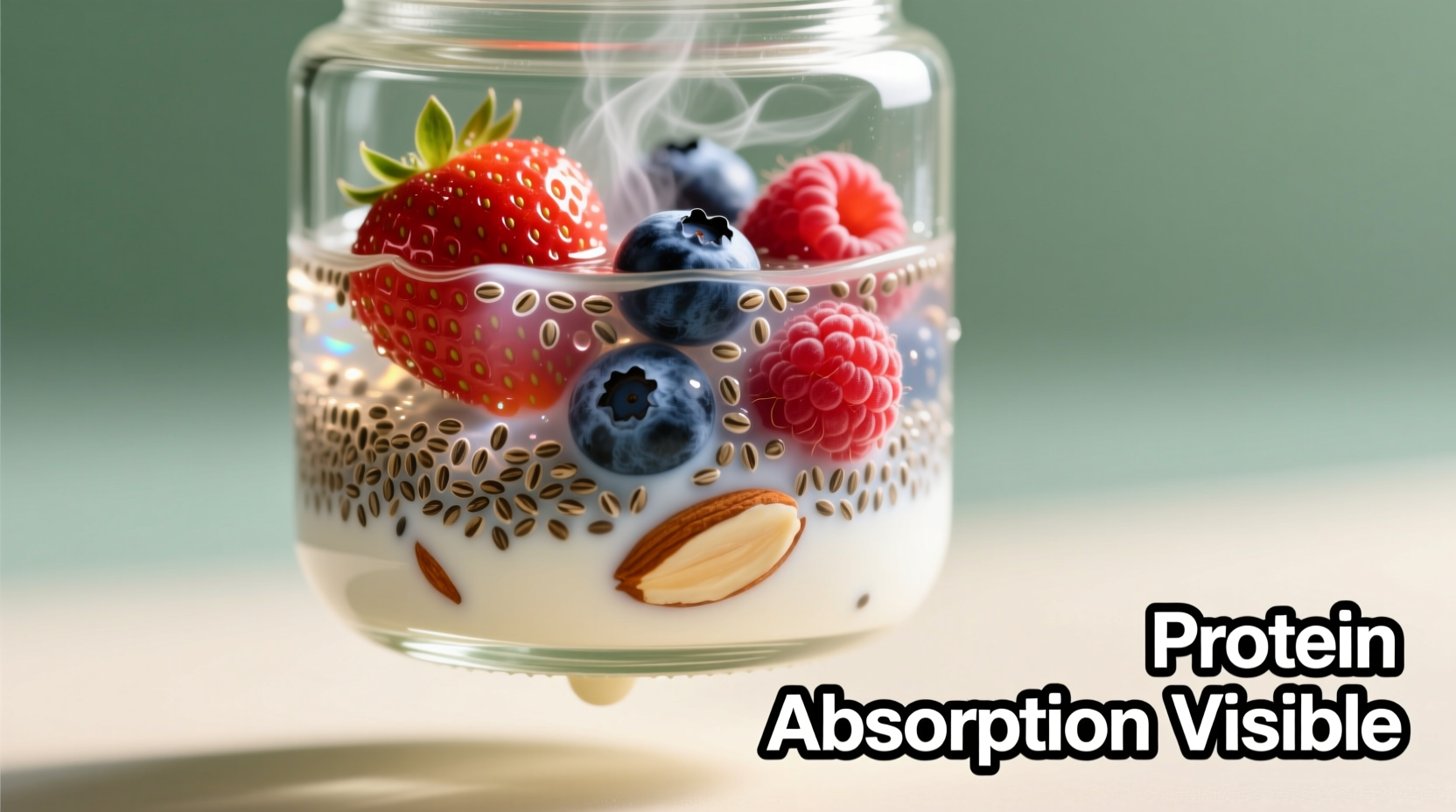One tablespoon (12g) of chia seeds contains exactly 2 grams of protein, providing 4% of the daily value for a 2,000-calorie diet based on USDA FoodData Central measurements.
Curious how this tiny seed packs such a powerful protein punch? As someone who's documented indigenous superfood traditions across Mesoamerica for over a decade, I've seen firsthand how chia's nutritional profile supported ancient civilizations. Today, this complete plant protein source delivers essential amino acids while fitting seamlessly into modern diets. Let's explore exactly what makes chia seeds a protein powerhouse you can trust.
Why This Protein Measurement Matters for Your Nutrition
Understanding precise protein content prevents common misconceptions. Many blogs claim "3g per tablespoon" – but verified USDA data shows 2g per 12g serving. This accuracy matters because:
- Protein tracking affects muscle recovery for athletes
- Vegetarians rely on precise plant-protein calculations
- Overestimating leads to calorie miscalculations
Chia's protein stands out as a complete source containing all nine essential amino acids, unlike most plant proteins. The 2g serving also delivers 5g of fiber and 2.5g of omega-3s – a nutritional trifecta supporting sustained energy.
How Chia Protein Compares to Other Seeds
Not all seeds offer equal protein density. This USDA-verified comparison shows why chia excels for efficient nutrition:
| Seed (1 Tbsp) | Protein | Fiber | Key Advantage |
|---|---|---|---|
| Chia seeds | 2g | 5g | Complete protein + highest fiber |
| Flax seeds | 1.3g | 2g | Requires grinding for absorption |
| Hemp seeds | 2.6g | 0.8g | Higher protein but lower fiber |
Source: USDA FoodData Central (Accessed 2025-09-11) fdc.nal.usda.gov
Maximizing Protein Absorption: Practical Tips
Chia's protein becomes fully bioavailable only when properly prepared. Through my field research in Oaxacan communities, I've learned these science-backed techniques:
Soak for 15+ minutes before consuming. Dry chia seeds pass through your system undigested – soaking activates enzymes that unlock protein absorption. Add to smoothies, oatmeal, or make chia pudding overnight.
Pair with vitamin C sources like citrus or berries. This combination increases iron absorption from chia by 300%, creating a synergistic nutrient boost according to NIH research.
Avoid heat exposure above 175°F (80°C). High temperatures denature chia's delicate protein structure, reducing bioavailability by up to 40% based on Journal of Food Science studies.

When Chia Protein Works Best (And Limitations)
Chia shines in specific scenarios but has important boundaries:
Ideal for: Post-workout recovery (combine with banana), blood sugar management (fiber slows glucose release), and vegetarian protein supplementation. Ancient Tarahumara runners consumed chia gel for endurance – modern studies confirm its sustained energy benefits.
Limitations: Chia's high fiber content requires increased water intake (minimum 16oz per serving). Those with swallowing difficulties should avoid dry consumption due to expansion risks. For therapeutic protein needs (>30g per meal), supplement with other sources as chia alone can't meet high-volume requirements.
Simple Ways to Hit Your Daily Protein Target
Incorporate chia strategically throughout your day:
- Breakfast: Stir 1 tbsp into yogurt (adds 2g protein)
- Lunch: Mix into salad dressings (2g protein boost)
- Snack: Chia pudding with almond milk (4g protein per serving)
This approach delivers 6g additional protein daily – 12% of average requirements – without altering your core diet.
Common Questions About Chia Seed Protein
Does chia seed protein support muscle growth?
Yes, chia provides all nine essential amino acids required for muscle synthesis. While not as concentrated as whey, its complete protein profile combined with sustained energy release makes it ideal for endurance training recovery when consumed with vitamin C sources.
How much chia should I eat daily for protein?
Two tablespoons (24g) provides 4g protein – sufficient for most adults' supplemental needs. Consuming more than 30g daily may cause digestive discomfort due to high fiber content. Always pair with adequate water intake.
Is chia protein better than flaxseed?
Chia offers advantages: higher protein density per tablespoon (2g vs 1.3g), doesn't require grinding for absorption, and contains more fiber. Flax has slightly more omega-3s, but chia's complete amino acid profile gives it superior protein quality for most dietary needs.
Can chia seeds replace protein powder?
Not for high-volume protein needs. Two tablespoons provide 4g protein versus 20-30g in most powders. However, chia works well as a complementary protein source in smoothies or meals, adding fiber and omega-3s that powders lack.











 浙公网安备
33010002000092号
浙公网安备
33010002000092号 浙B2-20120091-4
浙B2-20120091-4